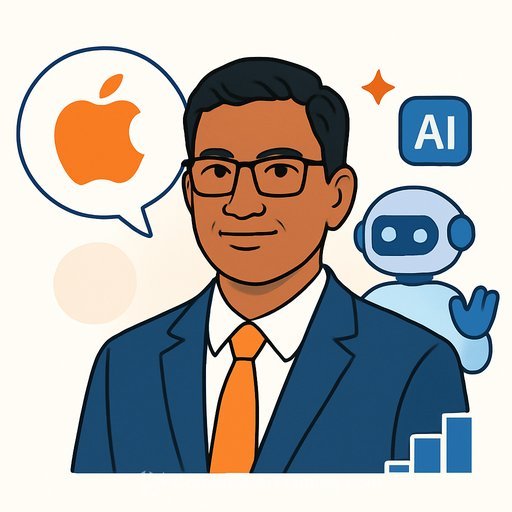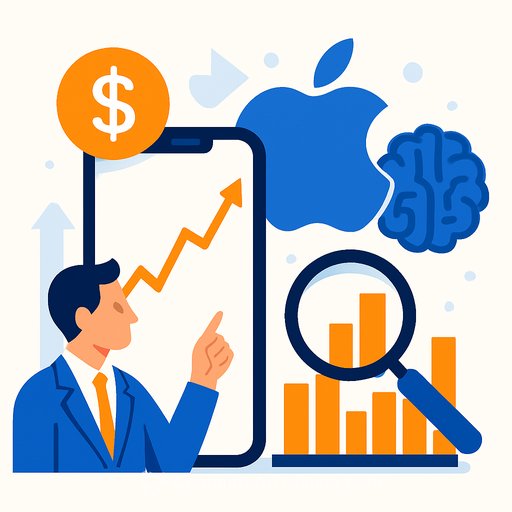What Is Sundar Pichai's Vision for AI Leadership?
Google just reported its first-ever US$100bn quarter. That headline matters, but the real story is the operating system behind it: a full-stack AI strategy driven by long-term leadership, disciplined execution, and clear metrics of adoption.
For executives, the takeaway is simple: AI is no longer a silo. It's a stack, a business model, and a culture choice.
The numbers that signal product-market fit for AI
- Quarterly revenue hit US$100bn - roughly double from five years ago.
- Google Cloud backlog reached US$155bn, up 46% quarter over quarter, with more large-scale enterprise deals signed.
- Search is expanding with AI Overviews driving meaningful query growth, especially among younger users.
- AI Mode now has over 75 million daily active uses in the US, with steady weekly growth.
- Consumer subscriptions crossed 300 million paid, led by Google One and YouTube Premium.
Full-stack AI as a leadership philosophy
Sundar Pichai frames AI as a full-stack approach: infrastructure, research and models, and products that reach billions. The stack is integrated end-to-end, so progress at one layer compounds across the others.
On infrastructure, Google runs on its own purpose-built TPUs and global systems that support every product. On research, models like Gemini and Veo push capability forward. Recent milestones - including the Willow quantum chip and internal Nobel recognitions - signal a durable engine for innovation.
What executives can apply now
- Own the stack where it matters: clarify the layers you must control (infrastructure, models, data, distribution) versus what you can partner on.
- Tie AI directly to P&L: track backlog, adoption, and usage - not just demos. Backlog is your forward signal; DAU is your product truth.
- Build an infra advantage: standardize on a scalable compute and data foundation so each new model or feature ships faster and cheaper.
- Ship AI into your core flows: think "AI Mode" for your product - a mode that improves the job to be done, every single day.
- Monetize through multiple doors: enterprise deals, self-serve, and subscriptions. Diversification compounds resilience.
- Shorten the research-to-product loop: convert breakthroughs into features inside quarters, not years.
- Make culture the force multiplier: spotlight teams, reward measurable impact, and keep priorities brutally clear.
How Google is running the model
Growth isn't coming from one bet. It's a portfolio: Search, Cloud, YouTube, and subscriptions - all compounding through shared AI capabilities. That's strategy as an operating cadence, not a slide.
Enterprise momentum shows up in backlog and larger deals. Consumer momentum shows up in daily usage and paid subs. Both ladders connect to the same stack - infrastructure, models, and product experiences.
People and culture as a scaling mechanism
Pichai consistently credits teams and partners for the quarter. That's not filler. It's how you keep thousands of people aligned on hard, multi-year bets.
Clear narrative, consistent priorities, and recognition of execution - that's how ambition turns into results without burning out the system.
Questions for your next exec meeting
- Where do we need full-stack control versus partnerships to win in AI?
- Which AI metrics are our north stars: adoption, backlog, engagement, margin - and how often do we review them?
- What is our "AI Mode" - a mode that measurably improves user outcomes inside our core product?
- How fast do we turn research or prototypes into shipped features? What blocks the path from idea to impact?
- What's our plan to build an enterprise-grade data and compute foundation that lowers time-to-value?
Where to go deeper
- Alphabet Investor Relations for earnings materials and segment performance.
- Google AI for model and research updates including Gemini and related tooling.
Build your team's AI capability
If you're standing up an AI upskilling track for leaders and operators, this curated library can help you find role-specific programs and certifications.
Bottom line: Pichai's vision treats AI as a stack, a business system, and a culture. The companies that win will operationalize all three.
Your membership also unlocks:






